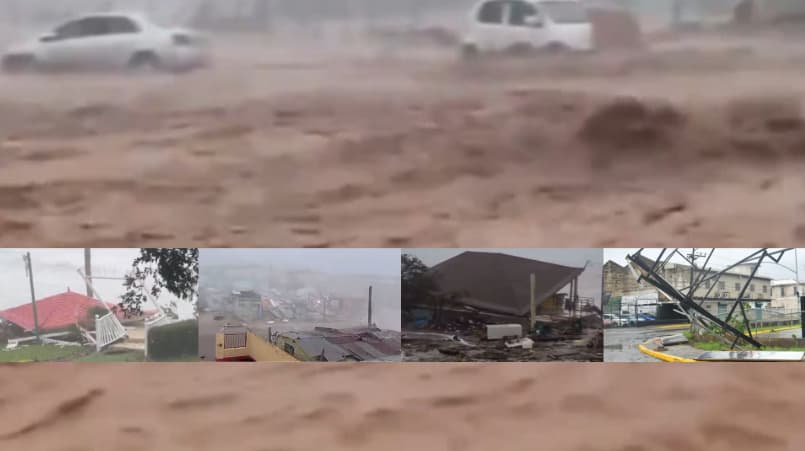
Two E-145 Jets set to arrive in Antigua today for LIAT 2020 fleet
2024-04-23 09:51:48
Due to the calamity, the reports of damage to schools, hospitals and road infrastructure have been recorded across Jamaica.

Jamaica: Strongest Category 5 Hurricane Melissa made a landfall in Jamaica with a maximum sustained winds of 185 mph and caused destruction at massive level on October 28, 2025. With ferocious winds, heavy rainfall and thunderstorms caused widespread damage and catastrophic flooding across the island.
Due to the calamity, the reports of damage to schools, hospitals and road infrastructure have been recorded across Jamaica. The extensive flooding has caused power outages and massive property damage as trees have been uprooted, and many buildings have had roofs torn off.
In addition to that, critical infrastructure is also heavily impacted with numerous tourists stranded in the aftermath. The hurricane has also been ranked amongst the strongest of the century. As of now, more than 500,000 people are without power and the full extent of fatalities and damage is still being assessed.
Early reports outlined that at least three deaths have been recorded in Jamaica. The landslides have caused destruction as the south-west area of Jamaica is reported to be underwater. Prime Minister Andrew Holness shared the update and noted that the help has been reaching immediately to the people in need as their team has been responding swiftly to the conditions.
He encouraged people and said that the government will support the country and its people. He said, “I know many, especially those in the worst affected parishes are feeling disheartened. Your homes may have been damaged or destroyed and your communities and towns no longer look the same.”
Notably, the Hurricane Warning is still in effect in Jamaica as the conditions are under monitoring and the citizens are asked to continue their preparations.
The Disaster Minister Desmond McKenzie confirmed that over 800 shelters are open, and as at about 3 hours ago, 382 are currently housing nearly 6,000 people across the island.
Minister McKenzie said some communities in St. Elizabeth are calling for help to leave dangerous areas, and he’s instructed local authorities to send transportation where possible.
He noted reports of flooding, fallen trees, power outages, landslides, and storm surges, especially in St. Thomas, Portland, and St. Catherine. Emergency teams are already out clearing roads and helping affected communities.
In addition to that, there are reports of severe flooding at the Black River Police Station in St Elizabeth, where court documents, exhibits, and case files were reportedly damaged or washed out following the passage of Hurricane Melissa across western Jamaica.
Several footage from inside the Sangster International Airport (MBJ) in Montego Bay shows severe water leaks, missing ceiling panels, and rain flooding parts of the departure lounge, after Hurricane Melissa tore through western Jamaica earlier today.
The Jamaica Public Service noted that more than 530,000 customers which is over 77% of its network are without electricity. Over 15,000 people of Jamaica are staying in shelters after the destruction caused by Hurricane Melissa to their houses in different communities.
The traffic light at the intersection of Oxford Road and Knutsford Boulevard in St Andrew lies across a crosswalk as sections of Kingston and St Andrew endure heavy winds from Hurricane Melissa, which is moving across Jamaica as a category four storm.
Besides this, Prime Minister Dr Andrew Holness has declared Jamaica a 'disaster area', as the country reels from widespread infrastructural damage and catastrophic flooding caused by Hurricane Melissa’s passage across the island.
Tuesday's decision follows advice from the Office of Disaster Preparedness and Emergency Management and Local Government Minister Desmond McKenzie, amid widespread flooding, landslides, and severe infrastructural damage particularly across Clarendon, Manchester, St Elizabeth and Westmoreland, where many communities remain cut off and roads impassable.